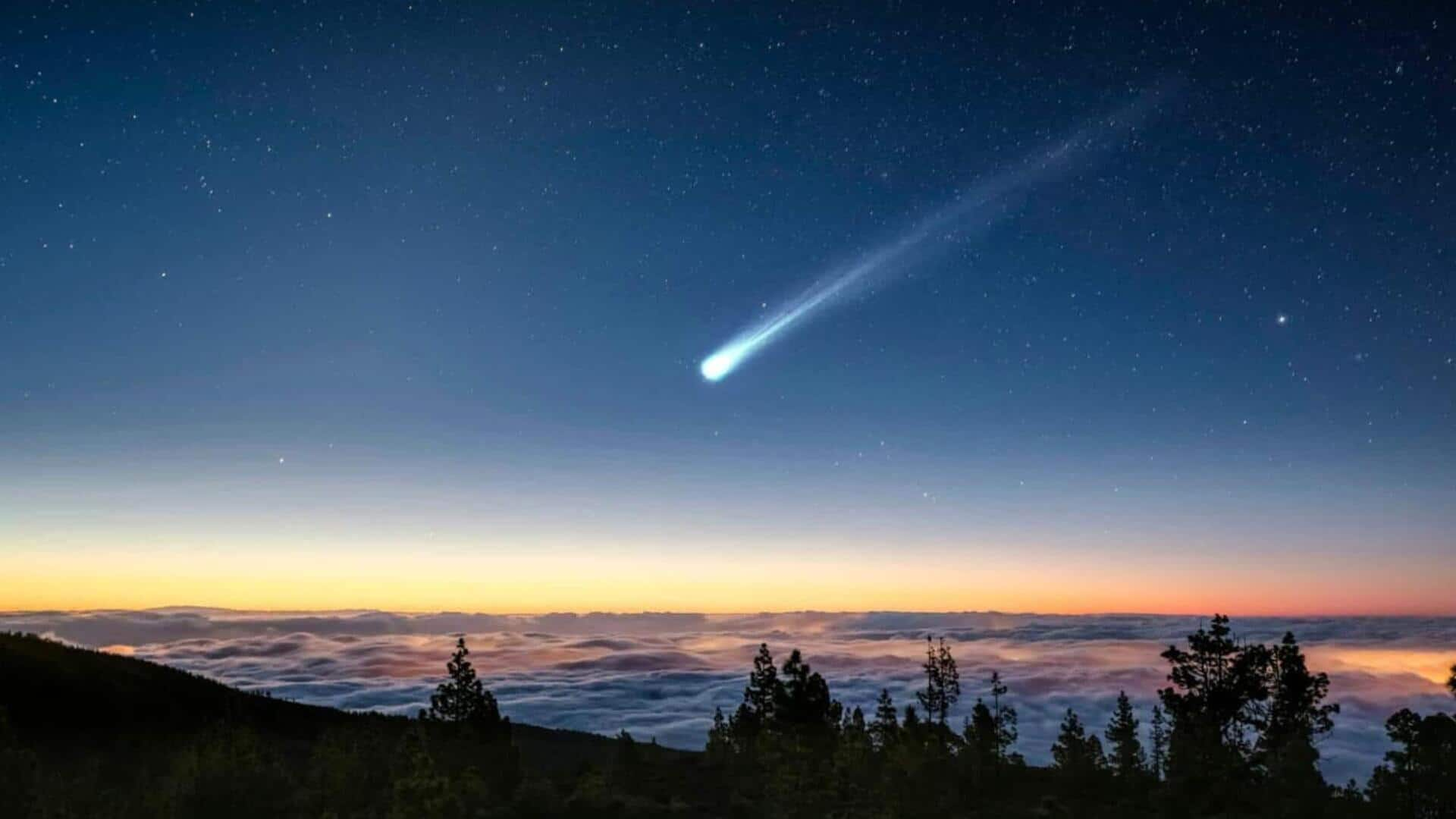
October's night sky to feature two comets and meteor showers
What's the story
Skywatchers are in for a rare celestial treat this month as two bright comets, C/2025 R2 (SWAN) and C/2025 A6 (Lemmon), will make their closest approach to Earth. The event coincides with the peak of the Orionid and Draconid meteor showers, giving stargazers a unique opportunity to witness these cosmic spectacles. The new moon on October 21 will provide ideal viewing conditions.
Celestial path
Comet SWAN's trajectory and visibility
Discovered in September 2025, Comet SWAN will become visibly brighter as it nears perihelion on October 21. Northern Hemisphere observers can spot it in the southwestern sky after sunset, close to the star Zubenelgenubi in Libra constellation. The comet will then continue its journey through Scorpius, Ophiuchus and Serpens constellations, creating a stunning sight in the fall sky.
Celestial alignment
Comet Lemmon's path across the sky
Discovered in January 2025, Comet Lemmon will be visible in the northwestern sky near the Big Dipper on October 12. By October 16, it will be nearly aligned with Cor Caroli, a bright star in Canes Venatici constellation. On October 21, Lemmon will be positioned below the Big Dipper and may even be bright enough to see without optical aid.
Meteor display
About Orionid meteor shower
The Orionid meteor shower, which comes from debris left by Halley's Comet, will peak on October 21-22. Under ideal dark-sky conditions, it can produce up to 20 meteors per hour. The meteors appear to radiate from the constellation Orion, which rises high in the southeast after midnight. This year, the new moon on October 21 will ensure dark skies for both comets and meteors. The Draconid meteor shower peaks on October 8.